How to Make Soft Spreadable Butter
You’ve seen the little tubs of “spreadable butter” in the dairy case of your supermarket. In fact, you may purchase them because they’re just so convenient. And if you know your prices you know the typical spreadable could almost be considered a luxury item.
Most “spreadables” are part real butter, part canola oil. Others have olive oil or some kind of an oil blend. What all of these spreadables have in common is that they remain perfectly soft, even while refrigerated.
Let me tell you how you can make your own spreadable butter for half the price. It’s insanely easy!
Cost Comparison
One 8-ounce tub is the equivalent of two sticks of butter. Depending on the brand, spreadable butter runs per ounce from about $.35 to $.45 for name brands.
Curiously, butter costs just about the same per ounce ($.30 to $.50) while canola oil comes in on avg. from $.08 to $.12, depending on store vs. name brand.
The ratio of butter to oil in a good spreadable is two parts butter to one part oil. That can bring the price down to around $.22 an ounce. Since I don’t pay full price for groceries (I wait for things to go on sale whenever possible) I make spreadable butter for around $ .15 an ounce. Your mileage may vary.
How to Make Spreadable Butter
Making your own spreadable butter is so easy, it’s nearly embarrassing:
Place two sticks (1 cup) of room-temperature butter into the bowl of your stand mixer (or any bowl if you use a hand mixer). Using the whip attachment, whip the butter until it is smooth, about one minute. Add 1/2 cup of your oil of choice (I prefer canola oil because it has a very light flavor and smooth texture). Whip on med-high for another minute. That’s it. You’re done.
Store your spreadable butter in the refrigerator in a clean container that has a lid. Finally, a good use for all of those spreadable butter tubs you’ve been hoarding.
If you buy both ingredients when they are on sale, you really can make your own spreadable butter for about half the price of the commercial brands. And as a bonus, you know exactly what’s in it.
Enjoy!

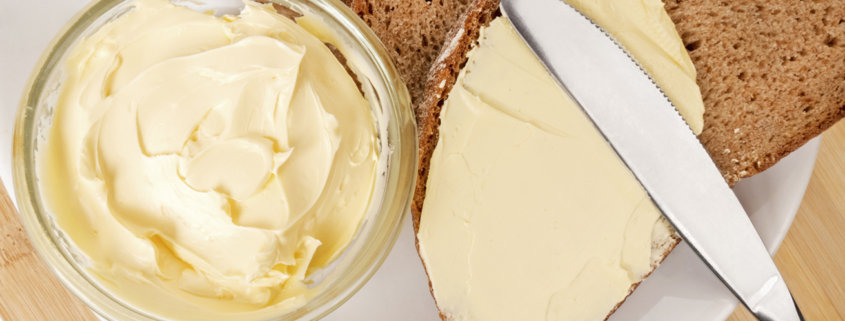

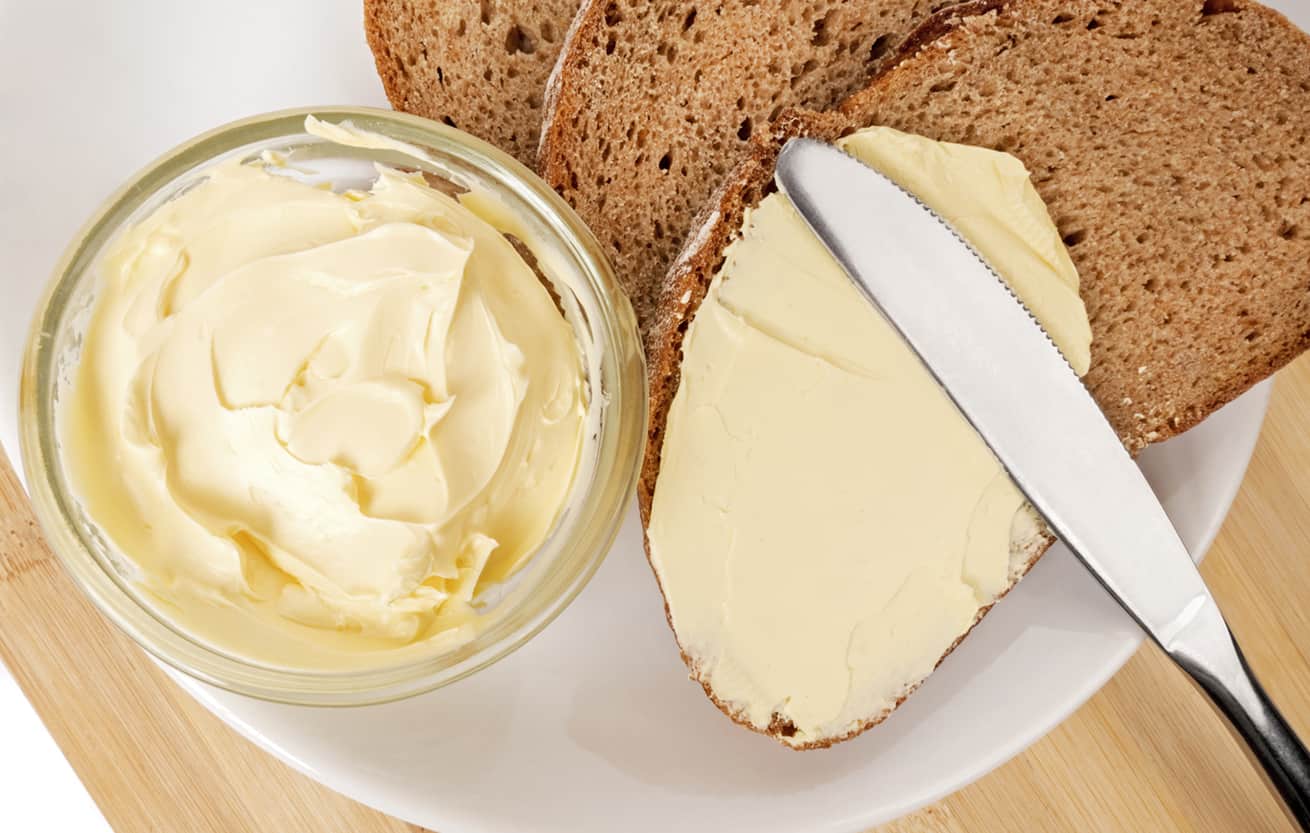


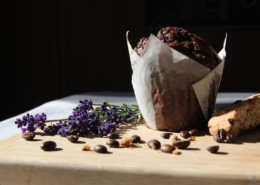
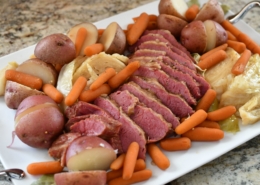
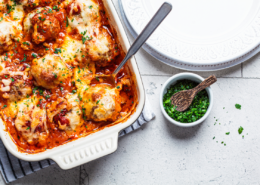

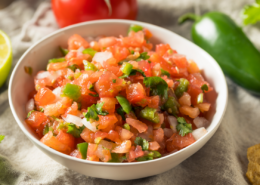


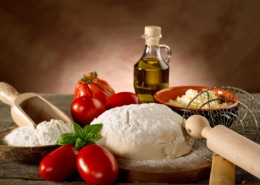


How much salt do you add to your recipe? I tried it using unsalted butter & it’s perfect. Just needs salt.
To taste. I can’t specify an amount as every taste is different. Using unsalted butter does allow you to control your sodium, which many people do.
When I refrigerated it, my definitely was not spreadable. Keeping the butter on the counter in the winter is not an option, as we must keep our house too cool and the counter is on the north side of the house.
Using your recipe, what the maximum time of fridge storage. “How long will it last in the fridge?” Only one person using it here…Thank you.
I treat it the same as butter.
I made this but I used a regular mixer. I did it for 1 minute like it said. It turned out hard after being in the refrigerator. Did I not do it long enough? How long with a regular mixer? I used canola.
Don’t make it to complicated. You can do there method but I melt the butter the next or at end of day once the water has dried a little. I mix the oil well in the melted butter and then let it cool. Also if you remove and filter out the foamy suds from top of melted butter it will make butter shelf stable as well so you can keep in refrigerator or keep on table. Also known as Ghee/clarified butter. I use avocado or olive oil for health but each to there own, use what ever oil you prefer.
I used to make highly spreadable butter with my KGN kids by shaking a jar of 1 cup of whipping cream vigorously by passing the jar around the circle of 24 kids as we sang a song. The results were delicious and we used it for the corn bread we ate for Thanksgiving. Pure delight!
How did you store it?
I tried this because I want to buy less plastic. So I whipped the butter in the mixer and it was already pretty soft so I poured the oil in slowly and just used 1/4 cup… that seemed to be plenty… and it was. I didn’t even try the 1/2 cup of oil. It seems like that would make it absolutely runny. Does it?
Not when stored in the refrigerator. But if you prefer the 1/4 cup of oil option, that’s awesome!
My mixture was very runny upon mixing, practically a liquid. However it firmed up perfectly when placed in the refrigerator. This is a great solution for us because (1) it taste good, (2) I know the exact ingredients in my food, and (3) it is economical without wasting refrigerator space. We previously purchased large tubs for economy, but they required more refrigerator space. We have always purchased butter at the warehouse club and kept a supply in the freezer.
I’ve been making my own spreadable butter for over 25 years, but I use a 1 to 1 ratio of oil to butter because it reduces the percentage of saturated fat vs. the healthier fats in the oils. I’ve used various oils – olive, canola, safflower – but currently use a mix of olive oil and avocado oil. I use it in place of regular butter for everything except baking.
Mary, would real stick butter mixed with virgin olive oil or maybe coconut oil & have the same effects???
Btw…love the “everyday cheapskate tips” I receive in my inbox from you daily!
I would use olive oil or avocado oil for health. Not so much on coconut oil it’s really only healthy when you get it raw which is solid at room temperature which wouldn’t make it so spreadable.
Just leave the butter out and covered. It is then spreadable, nutritious, and delicious.
Refrigeration slows down the process of oxidation, which will eventually cause butter to go rancid.
So true that’s why it’s better to turn it into clarified butter/ghee
Perhaps from a cooking standpoint, but this method of separating the fat and then discarding the milk solids to end up with “ghee” removes the flavor and makes already-expensive butter even more so. For my purposes in this post, turning butter into ghee is not practical or recommended. It may cook well, but tastes flat spread on toast.
we leave ours on the counter too, in a covered container. we go through it quickly enough we’ve never had it go rancid.
I remember doing this in the 70s. It was called Better Butter.